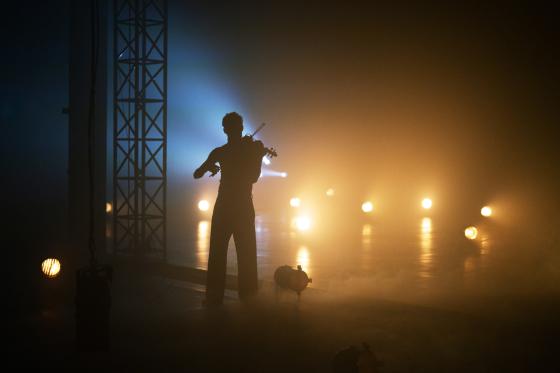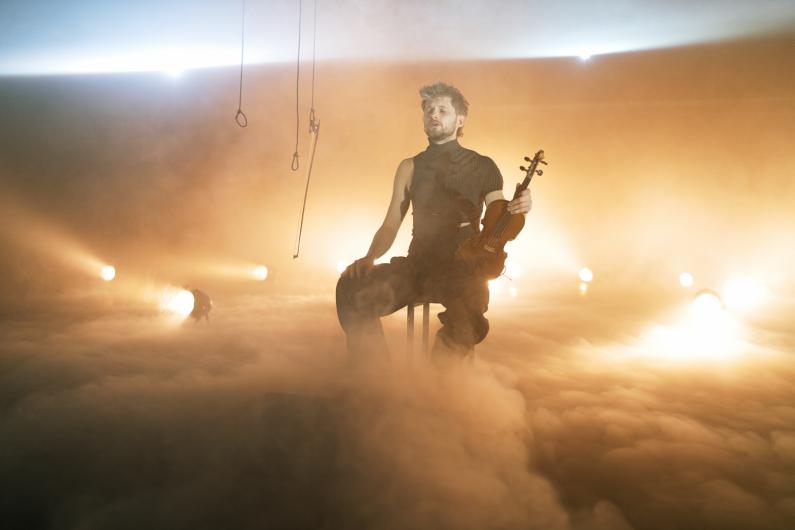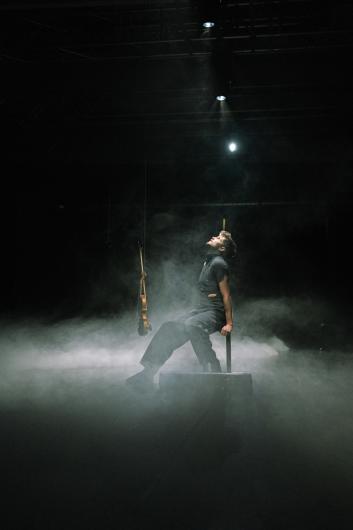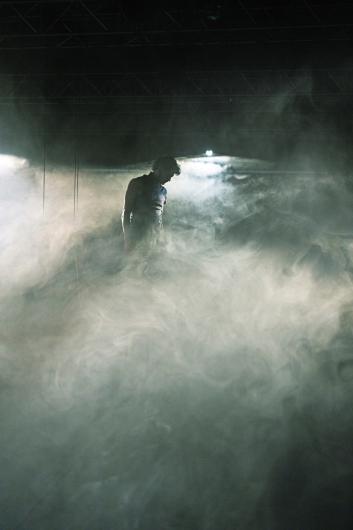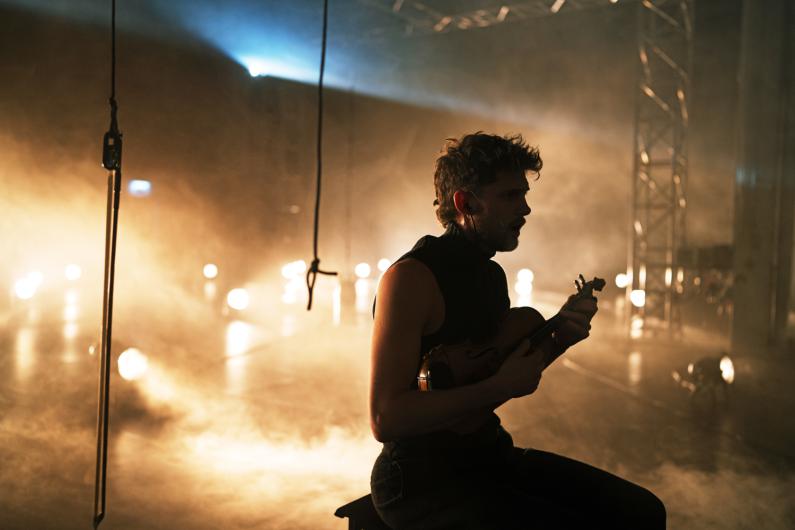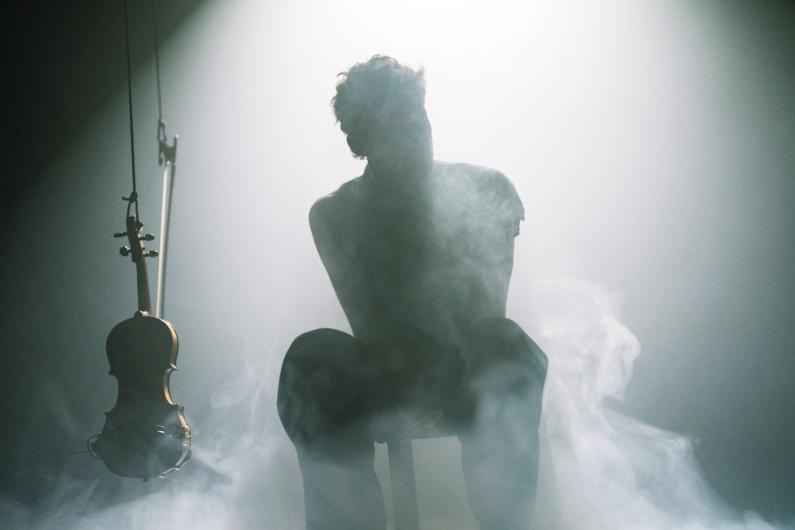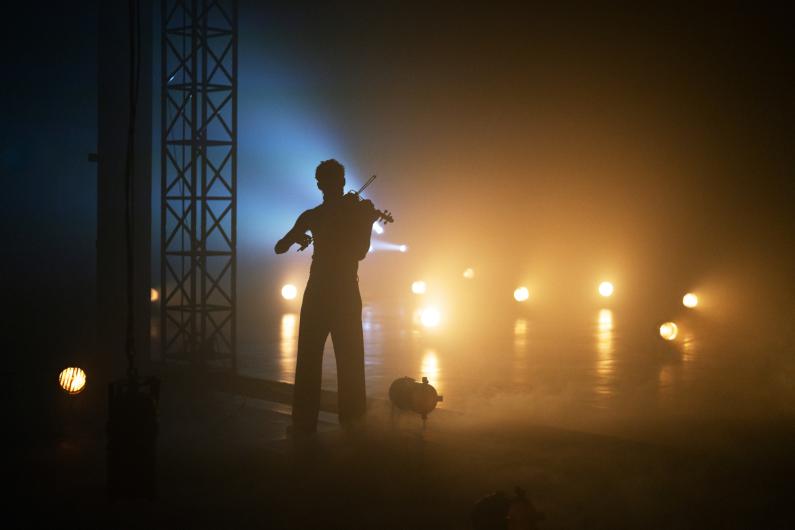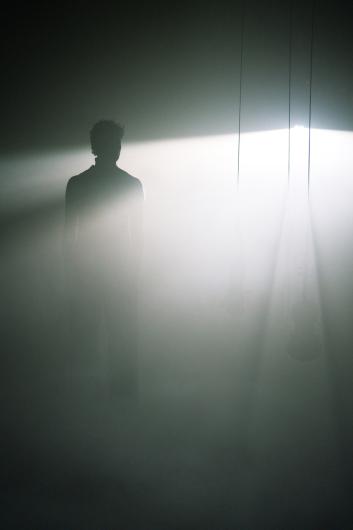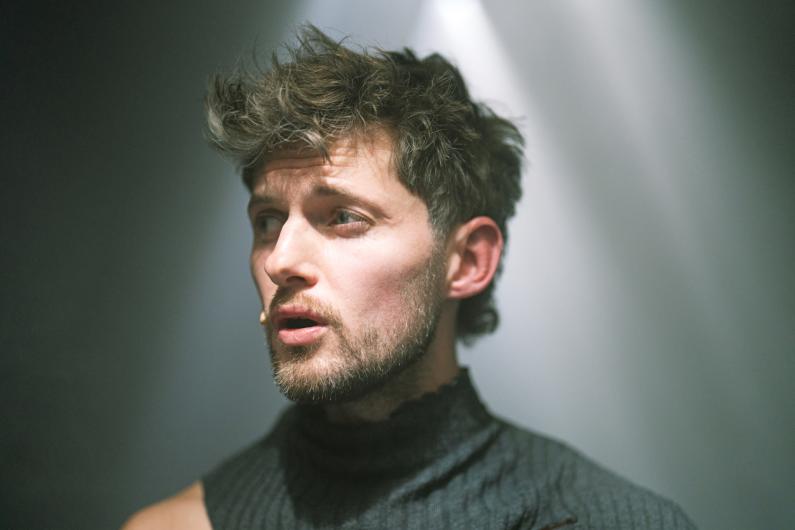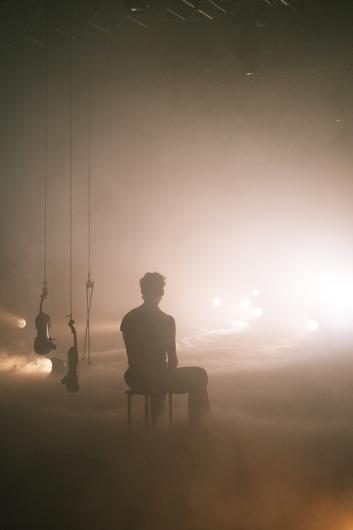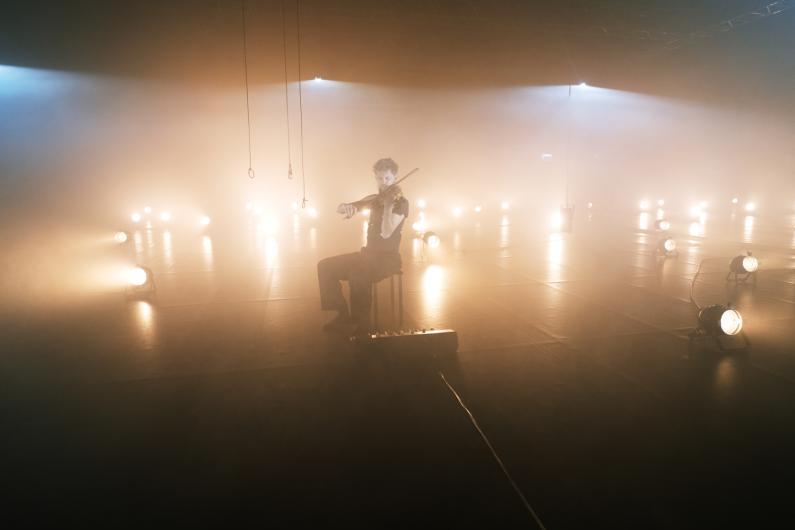Matteo Haitzmann
Im Styx baden
(Bathing in the River Styx)
Inspired by the mythological river Styx, Matteo Hatzmann’s Im Styx baden (Bathing in the River Styx) explores the state of being lost. The threshold between life and death, the visible and the invisible marks the starting point for a journey into the in-between.
Alone on stage, surrounded by haze, fog and silence, the musician and performer sits lost in a space that unfolds between exhaustion, desire and self-elected isolation. The fog surrounding him creates an ambient sight and represents an inner state that separates, obscures and protects. In the uncertainty that ensues, the self slows down, loses its way, sometimes dissolves altogether. From the loneliness arising from this state Matteo Haitzmann creates a musical monologue, a fragile sequence of songs, fragments and echoes. Im Styx baden is not a typical concert, but rather a form of performative condensation, of singing against silence, of fumbling around in the dark. The fog becomes the performer’s real counterpart: volatile and comforting, yet impenetrable. It is both separation and place of longing, a space without a clear direction, without solid ground. A place of infinity where your calls and songs remain unreturned.
Matteo Haitzmann is a musician, a performer and a composer. He studied the jazz violin at the Anton Bruckner Private University in Linz and performance art at the Vienna Academy of Fine Art, and he also finished the SODA master’s programme at UDK Berlin. Matteo Haitzmann works both solo and in groups and creates his own pieces in which physical presence and musical performance merge into hybrid new forms. He has performed, among others, at the Wiener Musikverein, Centre Pompidou in Paris, the Konzerthaus Wien, the Elbphilharmonie in Hamburg and the Gessnerallee in Zurich. His most recent show at brut Wien, the concert performance Make it Count (imagetanz 2024), was nominated for the Choreografische Plattform Austria – CPA 2025.
Hanna Kritten Tangsoo is an artist who lives in Berlin and works in the fields of dance, choreography and lighting design. She studied in Estonia and at HZT Berlin. As a lighting designer, she has contributed to productions at, among others, Sophiensæle, DOCK 11 and Uferstudios. Her work combines dance and lights in immersive formats and experimental spaces. She is currently devising her own creations at the intersection of body, space and perception.
Lukas Froschauer is a sound editor and physician based in Vienna. After finishing his medical studies, he started a sound editing course at the Vienna University of Music and Performing Arts. He works as a freelancer in the fields of music recording, sound directing and live electronics, predominantly in classical and experimental music. His projects combine sound, space and technology and his particular interest is in unconventional orchestration and the effects of sound on body and perception.
Credits
Concept, composition & performance Matteo Haitzmann Lighting design Hanna Kritten Tangsoo Sound design Lukas Froschauer Costume design Daliah Spiegel Performance support Malika Fankha Production management mollusca productions
Funded by the City of Vienna’s Department of Cultural Affairs (MA7) and the Austrian Federal Ministry of Housing, Art, Culture, Media and Sport (BMWKMS).
Dates & Tickets
October 2025
€ 22/€ 18/€ 14
€ 22/€ 18/€ 14 * followed by an artist talk, moderation: Flori Gugger
€ 22/€ 18/€ 14
€ 22/€ 18/€ 14
brut nordwest
Nordwestbahnstraße 8-10, 1200 Vienna
accessible
Info
The performance on Thu. 23.10. is followed by an artist talk, moderation: Flori Gugger.
Content notes
The performance uses strobe light, haze and loud sound. We recommend that light-sensitive individuals bring sunglasses with them.
Downloads
Evening programme for "Im Styx baden" by Matteo Haitzmann (PDF)
Event recommendations
Veza Fernández
Chantal, the body is a text longing for perspective
Alex Franz Zehetbauer
An Evening with
Magazin
